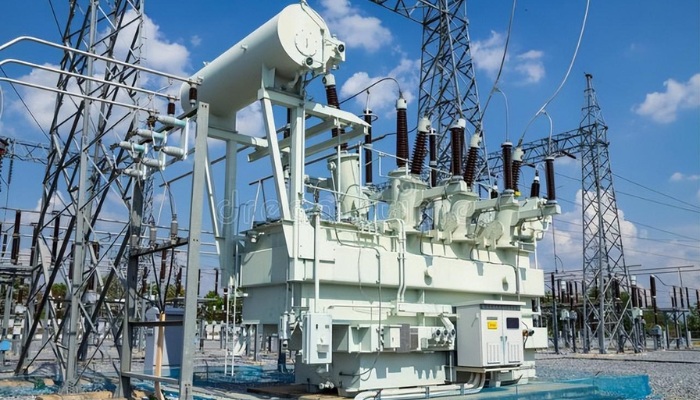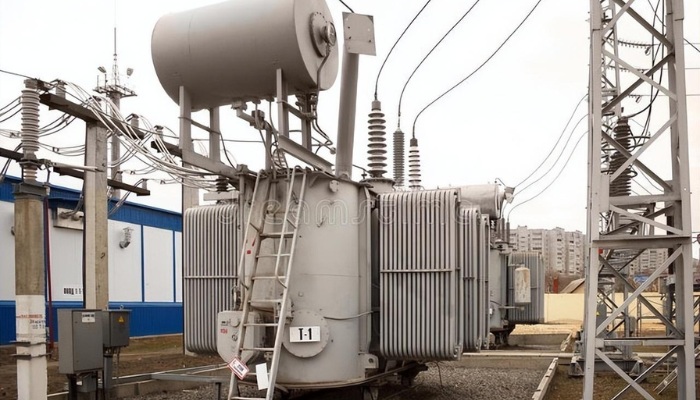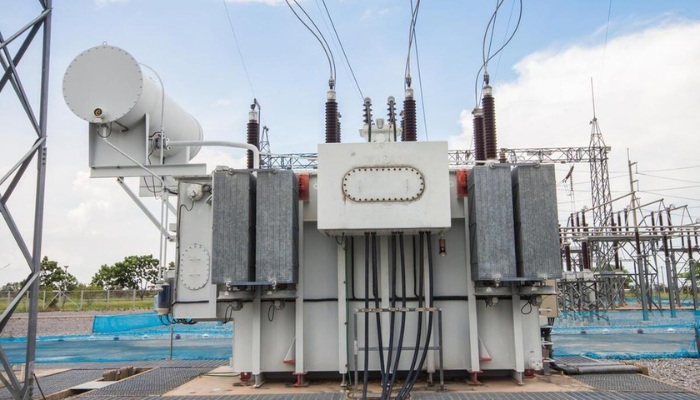This post will container following contents
1.Capacity selection of power transformers
2.Maintenance of Power Transformers
3.Handling of abnormal situations for power transformers
4. Analysis of Common Faults in Transformer Operation
Capacity selection for power transformers
The capacity selection of power transformers is very important. If the capacity is too small, it will cause overload and burn out the transformer; If the capacity selection is too large, the transformer will not be fully utilized, not only increasing equipment investment, but also reducing power factor, increasing line losses and transformer losses, and reducing efficiency. The capacity of general power transformers can be selected according to the following formula
In the formula, S is the transformer capacity; P is the total capacity of the electrical equipment; K is the ratio betwwen the actual capacity of really used and rated capacity of a transformer , usually around 0.7; η The efficiency of electrical equipment is generally 0.85-0.9; Cos φ The power factor of electrical equipment is generally 0.8 to 0.9.
When selecting the capacity of a power transformer, the factor that the direct starting current of the motor is 4-7 times the rated current should also be considered. The capacity of the largest motor that is usually directly started should not exceed about 30% of the transformer capacity.
Maintenance of Power Transformers
Operating standards for power transformers
Transformers can operate continuously for a long time under normal conditions. The normal operation of transformers includes the following aspects:
The transformer is intact. Mainly including intact transformer body without any defects; All electrical properties comply with regulations; The various indicators of transformer oil meet the standards, the oil level is correct, and the sound is normal; All auxiliary equipment (such as cooling devices, pressure regulating devices, bushings, gas relays, pressure relief valves, etc.) are intact and in compliance with the operating requirements of the transformer.
The operating voltage of the transformer should generally not exceed 105% of the rated voltage of the operating tap, and in special circumstances, it is allowed to operate at a voltage not exceeding 110% of the rated voltage.
The upper oil temperature of the transformer should generally not exceed 85 ℃, and the maximum should not exceed 95 ℃.
The load of transformers should be reasonably distributed based on their capacity. Excessive output current will cause severe heating, easily aging insulation, reducing service life, and even causing accidents; Long term underload will result in low power factor and insufficient utilization of equipment.
For three-phase unbalanced loads, the maximum phase current should be monitored.
The allowable value of the neutral line current of the transformer is 25% to 40% of the rated current.
The operating environment meets the requirements. This mainly includes good grounding of the transformer, fastening of all connectors, normal operation of lightning arresters on each side, and normal operation of all relay protection devices.
The cooling system is intact.
Transformer inspection
During the operation of the transformer, it should be inspected at least once a day and once a week at night. In severe weather conditions, inspections should be strengthened, and detailed records should be kept for each inspection. The on-site inspection should be carried out according to the following items:
Check whether the upper oil temperature of the transformer is normal and whether it is close to or exceeds the allowable limit.
Check whether the oil level on the transformer conservator is normal and corresponding to the oil temperature.
Check if the sound of the transformer operation is abnormal compared to before, such as an increase in sound or other new sounds.
Check whether the surface of the bushing at each side of the transformer is clean, and whether there is damage, crack and discharge trace. For the oil filled bushing, check whether the oil level is normal and whether there is oil leakage.
Check whether the wiring terminals or connecting hardware on each side of the transformer are complete, secure, and have no signs of overheating.
Check the transformer oil tank for oil leakage and whether the status of various valves on the tank shell meets operating requirements.
Check whether the cooling device operates normally, such as whether the fan and submersible pump operate as required, whether the operating sound of the fan and submersible pump is normal, and whether the wind direction and oil flow direction are correct.
Check if the position indication of the pressure regulating tap is correct. For transformers or single-phase transformer groups operating in parallel, it is also necessary to check whether the positions of each voltage regulating tap are consistent.
Check if the silicone in the respirator turns red and if the oil level in the small oil cup of the respirator is suitable.
Check whether various electrical devices in the electric control box and mechanism box are in good condition, their positions and status are correct, and whether the sealing of the box shell is good.
Handling of abnormal situations for power transformers
(1) The duty personnel should eliminate any abnormal phenomena (such as oil leakage, high or low oil level, high temperature, abnormal noise, abnormal cooling system, etc.) found during the operation of the transformer as soon as possible, report to the superior leadership, and record the situation in the operation records and defect records.
(2) Transformers should be immediately withdrawn from operation for inspection and repair if one of the following situations occurs:
Excessive internal noise with explosive sound;
Under normal load and cooling conditions, the temperature of the transformer is abnormal and continuously rising;
Fuel injection from the conservator or safety airway;
Severe oil leakage causes the oil level to drop below the indicated limit of the oil level gauge;
Excessive changes in oil color, resulting in the appearance of carbon in the oil;
The porcelain bushing is seriously damaged and discharged.
(3) When the increase in transformer oil temperature exceeds the allowable limit, the load of the transformer and the temperature of the cooling medium should be checked, and the oil level at the same load and cooling medium temperature should be checked. The thermometer, cooling system, and ventilation condition should be checked.
(4) After the gas relay of the transformer acts, it should be handled according to the following requirements:
Check whether the explosion-proof tube of the transformer has oil spray, whether the oil level has decreased, whether the oil color has changed, and whether there is a large amount of oil leakage in the casing;
Use special tools to extract gas from the gas relay for testing. If the gas in the gas relay is colorless, odorless, and non combustible, the transformer can continue to operate, but the interval between actions should be monitored;
If the gas inside the gas relay is colored and flammable, gas chromatography analysis should be carried out immediately;
If there is no gas in the gas relay, check whether the insulation of the secondary circuit, terminal posts, and leads is good;
If the gas protection signal and trip of the gas relay act simultaneously due to a decrease in oil level, remedial measures should be taken in a timely manner, and they should not be put into operation again without passing inspection and testing.
(5) If the transformer trips automatically or the primary side fuse is blown, inspection and testing are required to identify the cause of the trip, or necessary internal inspections are carried out.
(6) When the transformer catches fire, the power should be disconnected first and the fire extinguishing device should be used quickly to extinguish the fire.
Analysis of Common Faults in Transformer Operation
1) Insulation faults of between the windings
The main reasons would be like:
Long term overload operation or poor heat dissipation conditions or long service life result in aging and brittle insulation of transformer windings, greatly reducing the electrical strength;
The transformer has been subjected to multiple short circuit impacts, causing the winding to deform under force and hiding insulation defects. If there is any voltage fluctuation, it will potentially cause insulation damage;
Another reason is, in some rainy days, water may ingress into transformer oil , this will also greatly reduces the insulation level and is not able to withstand the associated voltage any more , resulting in insulation breakdown;
At the strengthening section of the high-voltage winding or the low-voltage winding, due to insulation expansion, the oil passage is blocked, affecting heat dissipation, causing the insulation of the winding to age due to overheating, leading to breakdown and short circuit;
Sometimes, the transformer did not equip with a lightning protection device, insulation performance can be breakdown easily under atmospheric overvoltage.
(2) Transformer bushing fault
Mainly due to casing flashover and explosion. Due to poor porcelain quality, sand holes and cracks, poor sealing of the bushings, oil leakage, and excessive scaling of the bushings, flashover and explosion may occur.
(3) Core failure
Due to poor fabrication of silicon steel core, the paint film is easilu get hurted. At this time, it would cause an overheat for a transformer core;
The core screws, pressure iron, and other components used to clamp the iron core are damaged, and overheating can also occur if the insulation is damaged;
(4) Tap changer fault
Due to a long time high pressure contact to the switching part of tap changer or a poor quality of a tap changer, it can not withstand the impact of short-circuit current, or having a short circuit when maintainance guys switching on or off the tap changer, at this time , it will get the tap failed.
(5) Failure of gas protection.
PowerTel & his factories can provide you a tailored design & fabrication of a wide range of power transformer up to 500 kV, and a full range of distribution transformer , including a pad mounted transformer, various applications; Meanwhile, we are able to provide you a complete solution for your electrical substations, from technical consulting, initial & optimal design, package supply of materials, construction & installation, to final testing & commissioning.
Please feel free to contact us if you have any plan to build up a new electrical substation or upgrade your existing one.
